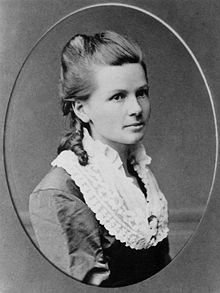Portal:Cars
The Cars PortalA car, or an automobile, is a motor vehicle with wheels. Most definitions of cars state that they run primarily on roads, seat one to eight people, have four wheels, and mainly transport people rather than cargo. There are around one billion cars in use worldwide. The French inventor Nicolas-Joseph Cugnot built the first steam-powered road vehicle in 1769, while the Swiss inventor François Isaac de Rivaz designed and constructed the first internal combustion-powered automobile in 1808. The modern car—a practical, marketable automobile for everyday use—was invented in 1886, when the German inventor Carl Benz patented his Benz Patent-Motorwagen. Commercial cars became widely available during the 20th century. The 1901 Oldsmobile Curved Dash and the 1908 Ford Model T, both American cars, are widely considered the first mass-produced and mass-affordable cars, respectively. Cars were rapidly adopted in the US, where they replaced horse-drawn carriages. In Europe and other parts of the world, demand for automobiles did not increase until after World War II. In the 21st century, car usage is still increasing rapidly, especially in China, India, and other newly industrialised countries. Cars have controls for driving, parking, passenger comfort, and a variety of lamps. Over the decades, additional features and controls have been added to vehicles, making them progressively more complex. These include rear-reversing cameras, air conditioning, navigation systems, and in-car entertainment. Most cars in use in the early 2020s are propelled by an internal combustion engine, fueled by the combustion of fossil fuels. Electric cars, which were invented early in the history of the car, became commercially available in the 2000s and are predicted to cost less to buy than petrol-driven cars before 2025. The transition from fossil fuel-powered cars to electric cars features prominently in most climate change mitigation scenarios, such as Project Drawdown's 100 actionable solutions for climate change. (Full article...) Entries here consist of Good and Featured articles, which meet a core set of high editorial standards.
 The Chevrolet Cobalt SS comprises three sport compact versions of the Chevrolet Cobalt that were built on the General Motors Delta platform at Lordstown Assembly in Ohio, United States. The three versions included two forced induction inline-four Ecotec engines and a third naturally aspirated engine that was later called the Cobalt Sport. SS is an abbreviation of Super Sport, a historic moniker used by Chevrolet to denote high performance upgrades that meet certain criteria. The Cobalt SS was GM's first foray into the tuner market, launching as a 205 hp (153 kW; 208 PS) supercharged 2.0 L coupe in late 2004, paired only with the Saab F35 5-speed manual transmission. The following year, a naturally aspirated 1SS model equipped with GM's new 2.4 L 171 hp (128 kW; 173 PS) engine was added in both coupe and sedan body styles, including automatic and manual transmission options. Production of the supercharged coupe continued until 2007, and after a brief hiatus the SS relaunched in the second quarter of 2008 with a more efficient and powerful turbocharged 2.0 L engine producing 260 hp (194 kW; 264 PS) before all Cobalt production ended in 2010. (See timeline). (Full article...) Selected article - The Mini Moke is a small, front-wheel-drive utility and recreational convertible, conceived and manufactured as a lightweight military vehicle by British Motor Corporation (BMC), and subsequently marketed for civilian use under the Austin, Morris, Leyland, and Moke brands. The name "Mini Moke" combines mini with moke, an archaic term for a mule. The Moke is known for its simple, straightforward, doorless design; and for its adaptability. BMC's Cowley plant started building Mokes in January 1964, with 14,518 produced in the UK between 1964 and 1968; 26,000 were manufactured in Australia between 1966 and 1981; and 10,000 in Portugal between 1980 and 1993 when, after a nearly 30-year run, production ended. (Full article...) Selected picture of the day
Selected biography -Bertha Benz (German: [ˈbɛʁta ˈbɛnts] ⓘ; née Cäcilie Bertha Ringer; 3 May 1849 – 5 May 1944) was a German automotive pioneer. She was the business partner, investor and wife of automobile inventor Carl Benz. On 5 August 1888, she was the first person to drive an internal-combustion-engined automobile over a long distance, field testing the Benz Patent-Motorwagen, inventing brake lining and solving several practical issues during the journey of 105 km (65 miles). In doing so, she brought the Patent-Motorwagen worldwide attention and got their company its first sales. Bertha Benz was not allowed to study in the Grand Duchy of Baden, and her financial and practical engineering contributions have long been overlooked until the 21st century. (Full article...) On this day January 9
Did you know...
Selected quote of the dayTo get to know a country, you must have direct contact with the earth. It's futile to gaze at the world through a car window. TopicsGeneral imagesThe following are images from various car-related articles on Wikipedia.
CategoriesThings you can do to help If you wish to help, you can:
Associated WikimediaThe following Wikimedia Foundation sister projects provide more on this subject:
Discover Wikipedia using portals |










































































